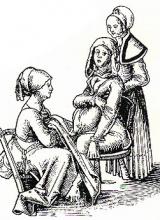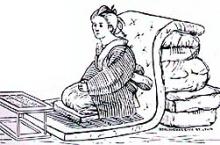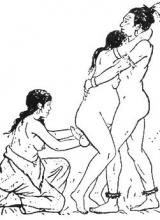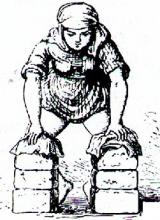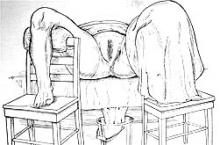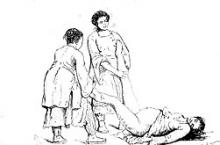Childbirth in Ancient Civilizations
What happened do this predator primate, specifically this culture, that dominated the planet, to have changed the way of giving birth with such significative consequences?
We will try to answer that looking at other times and other peoples.
At the end of the 19th century, those that called themselves “civilized” started to rethink labor & delivery, studying it on ancient and primitive peoples.
Engelmann (1881), in his book “Labor Among Primitive People” describes: “(...) the position for labor changes according to the constitution, the size of the pelvis, and the various stages of labor, according to the position of the end of labor, according to the position of the child’s head on the pelvis”, and he concludes:
“Non-civilized women avoid the lying down position at the end of labor; this is proof that, in the most common cases, that position is not the best, and I am of the position that mindwives, with wisdom, will agree with me that, well known among the savages, ignorant but observant, like the blacks and the Indians – the horizontal position makes labor last longer and it is not without dangers.”
G.L. Witkoski, author of a book published in 1887, “Histoire de l’Accouchement chez tous les peuples”, tells that labor occurs lying down only among the Siamese people. He gives detailed descriptions, and concludes:
“I must admit that, during the first period of labor, the natural position of the woman is vertical (...) during the delivery period, it is necessary to put the woman lying down, with pillows on her back that will allow her to lie with an inclination of 45 degrees.”


